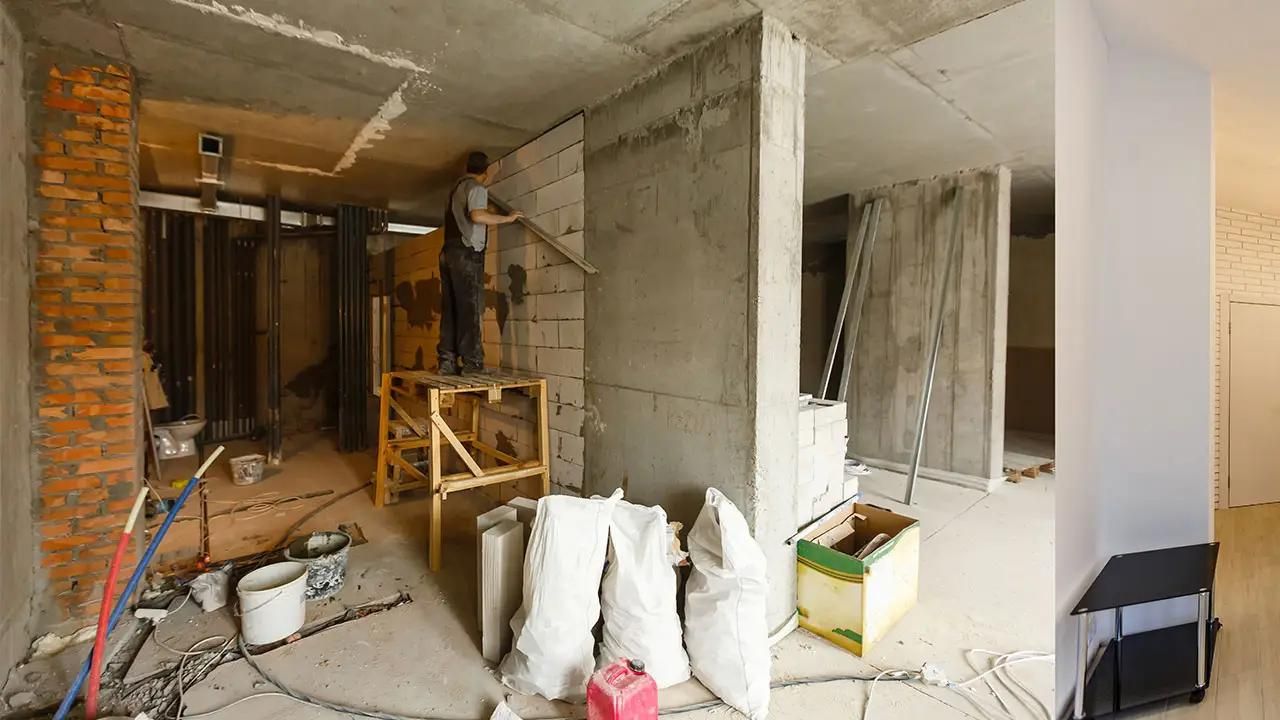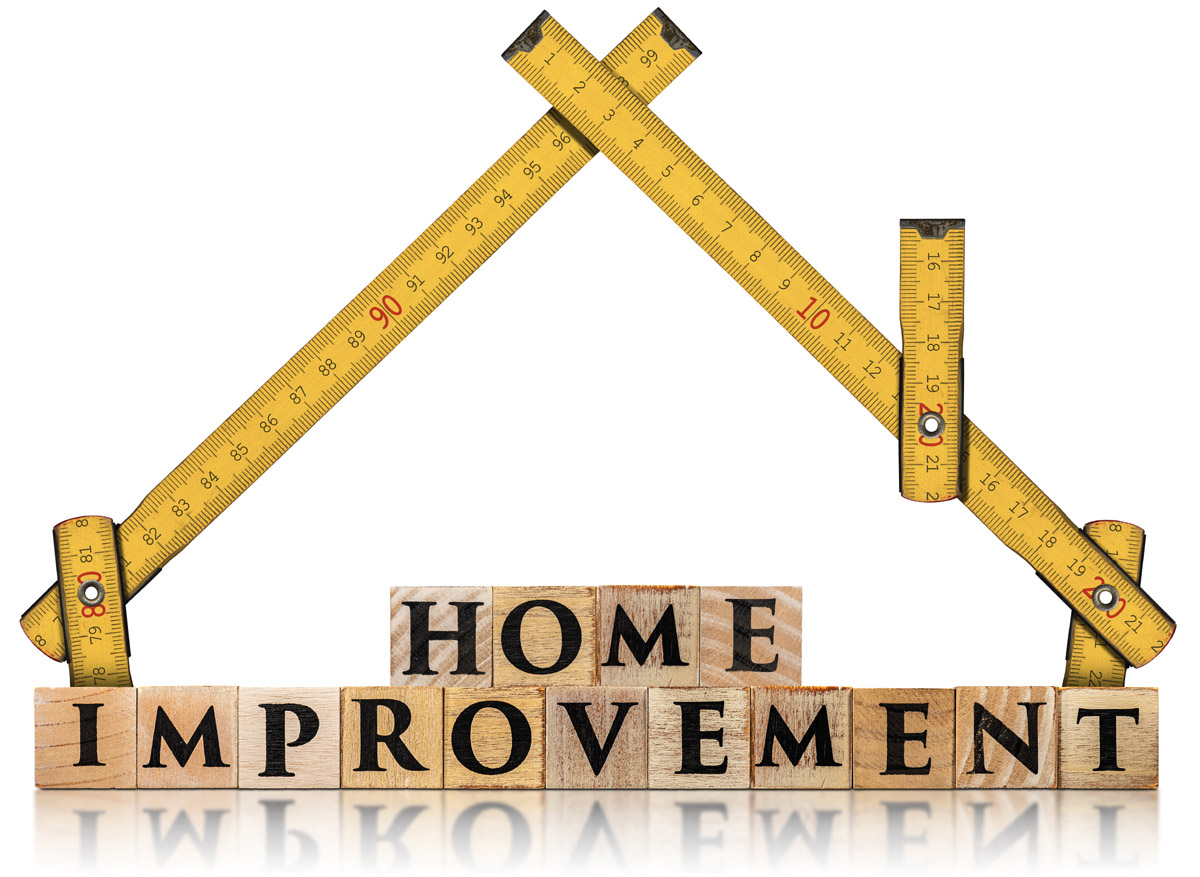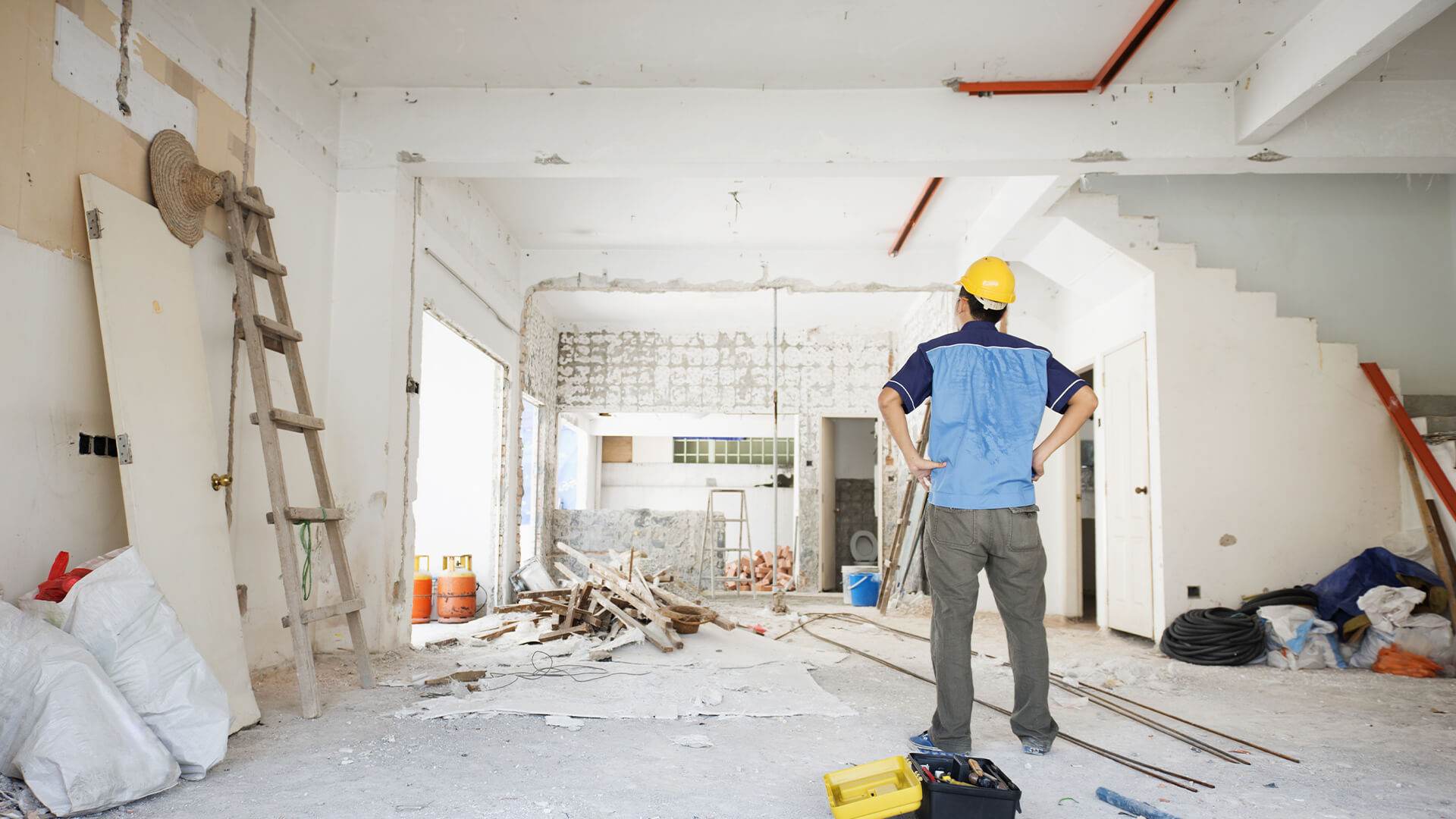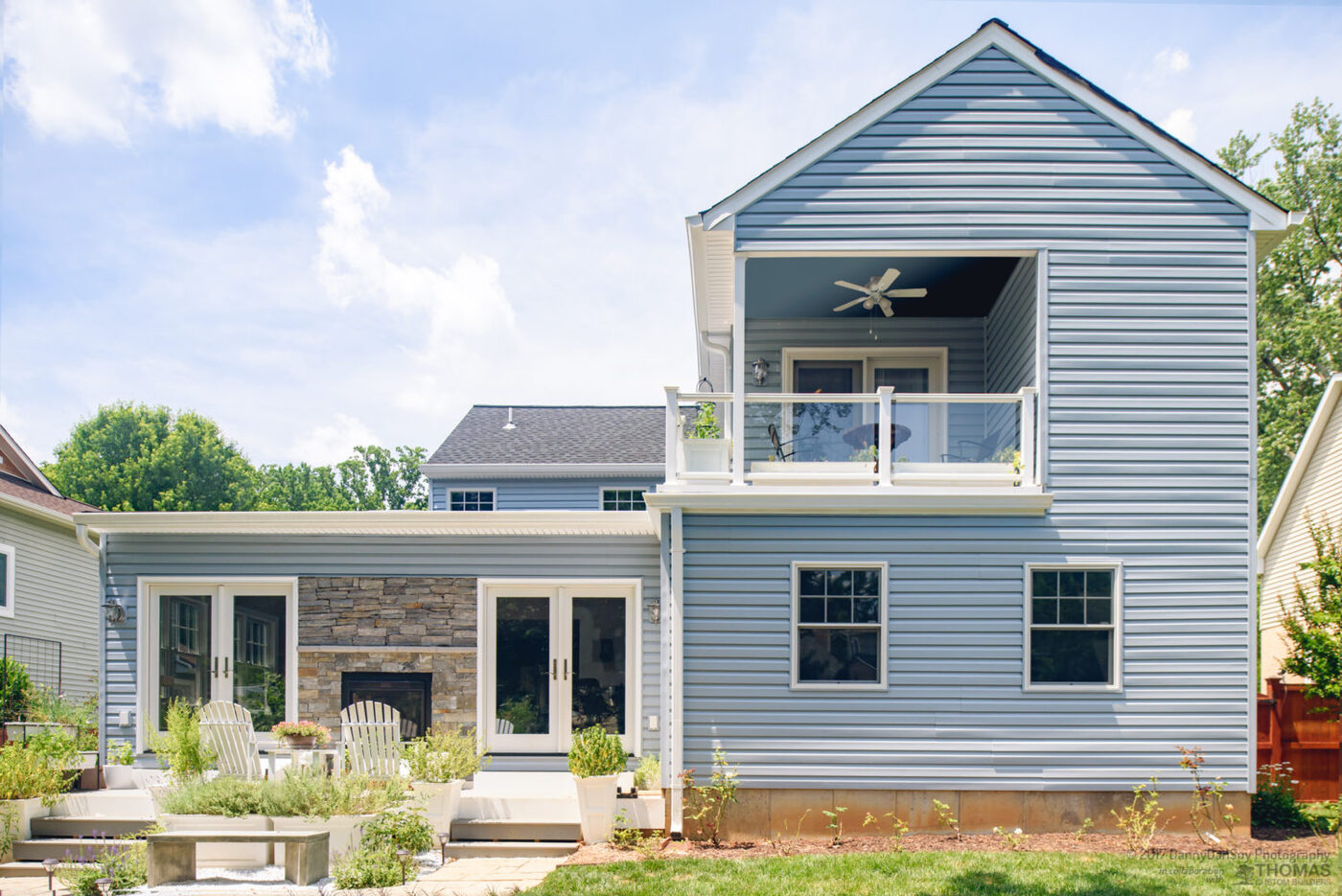Home>Home Maintenance>On Mortgage Loan: How Do You Get Extra Included For Home Repairs Or Renovation


Home Maintenance
On Mortgage Loan: How Do You Get Extra Included For Home Repairs Or Renovation
Modified: March 24, 2024
Learn how to get extra funds included in your mortgage loan for home repairs or renovations. Discover the benefits of including home maintenance costs in your mortgage.
(Many of the links in this article redirect to a specific reviewed product. Your purchase of these products through affiliate links helps to generate commission for Storables.com, at no extra cost. Learn more)
Introduction
When it comes to buying a new home or refinancing your existing one, a mortgage loan is often the most viable financial solution. However, in addition to covering the cost of the property itself, many homeowners also find themselves in need of extra funds for necessary home repairs or renovations. The good news is that it is possible to include these costs in your mortgage loan, providing you with the financial resources you need to make your dream home a reality.
In this article, we will explore the process of including extra funds for home repairs or renovations in a mortgage loan. We will explain the different types of mortgage loans available, how to qualify for additional funds, the documentation and verification process, as well as the pros and cons of including extra funds in your mortgage loan. Additionally, we will provide you with some useful tips to help you successfully navigate this process and secure the necessary funds for your home improvements.
Whether you are a first-time homebuyer or a seasoned homeowner looking to upgrade your property, understanding how to include extra funds for home repairs or renovations in your mortgage loan can be a game-changer. It allows you to consolidate the costs and streamline the financial aspects of your project, making it easier to manage and budget for your desired improvements.
So, if you are ready to learn how to obtain those extra funds for your home repairs or renovations, let’s dive in and explore the world of mortgage loans and the options available to you as a homeowner.
Key Takeaways:
- Including extra funds for home repairs or renovations in your mortgage loan simplifies financing, potentially lowers interest rates, and may offer tax benefits. However, it’s crucial to carefully weigh the longer loan term and inherent risks associated with borrowing funds.
- To successfully include extra funds in your mortgage loan for home repairs or renovations, research loan options, improve your credit score, and prepare detailed project estimates. Collaborate with a mortgage specialist, review loan terms carefully, and communicate openly with your lender to navigate the process effectively.
Understanding Mortgage Loans
Before delving into the specifics of including extra funds for home repairs or renovations in a mortgage loan, it is important to have a solid understanding of what a mortgage loan actually is and how it works.
A mortgage loan, also known as a home loan, is a type of loan that allows individuals to borrow money from a financial institution, such as a bank or credit union, to purchase a property. The property itself serves as collateral for the loan, providing the lender with a form of security.
Mortgage loans typically come with a repayment period of 15 to 30 years, during which borrowers make monthly payments consisting of principal and interest. The interest rate on the loan may be fixed or adjustable, depending on the terms of the mortgage agreement.
When applying for a mortgage loan, lenders evaluate several factors to determine your eligibility and the terms of the loan. These factors include your credit score, income, employment history, and the amount of money you are willing to put towards a down payment. The lender will also assess the value and condition of the property you wish to purchase to ensure it meets their lending criteria.
Once approved for a mortgage loan, the lender will provide you with the funds needed to purchase the property. You will then begin making monthly payments towards the loan, gradually paying down the principal amount borrowed along with the accrued interest.
It is important to note that mortgage loans are highly regulated and subject to specific laws and regulations that vary by country. These regulations are in place to protect both lenders and borrowers, ensuring fair and transparent lending practices.
Now that we have a basic understanding of how mortgage loans function, let’s explore the different types of mortgage loans available to homeowners.
Types of Mortgage Loans
When it comes to mortgage loans, there are several types to choose from, each with its own set of features and benefits. Understanding the different options available can help you determine which type of loan best suits your needs. Here are the most common types of mortgage loans:
- Conventional Loans: Conventional loans are the most traditional type of mortgage loans and are not insured or guaranteed by the government. These loans typically require a higher credit score and a larger down payment compared to other loan types. Interest rates on conventional loans can be fixed or adjustable, allowing borrowers to choose the repayment structure that suits them best.
- FHA Loans: Backed by the Federal Housing Administration (FHA), FHA loans are designed to make homeownership more accessible to individuals with lower credit scores and smaller down payments. These loans have more relaxed eligibility requirements and may be a good option for first-time homebuyers or those with limited financial resources.
- VA Loans: VA loans are available to current and former members of the military, as well as their eligible spouses. These loans are guaranteed by the Department of Veterans Affairs (VA) and offer competitive interest rates and flexible qualification criteria. VA loans often require no down payment or mortgage insurance, making them an attractive option for eligible borrowers.
- USDA Loans: USDA loans are backed by the United States Department of Agriculture and designed to help individuals with low to moderate incomes purchase homes in rural areas. These loans offer low-interest rates and require no down payment, making them an affordable option for qualifying borrowers.
- Jumbo Loans: Jumbo loans are non-conforming mortgage loans that exceed the loan limits set by government-sponsored enterprises, such as Fannie Mae and Freddie Mac. These loans are typically used for high-value properties and often require higher credit scores and larger down payments due to the higher loan amounts involved.
These are just a few examples of the types of mortgage loans available to homeowners. It is important to carefully consider your financial situation, goals, and eligibility when deciding which type of loan is right for you.
Now that we have explored the different types of mortgage loans, let’s move on to understanding how you can include extra funds for home repairs or renovations in your mortgage loan.
Including Extra for Home Repairs or Renovation: Explained
When purchasing a new home or refinancing your existing one, you may find yourself in need of additional funds to cover essential repairs or desired renovations. Luckily, it is possible to include these costs in your mortgage loan, providing you with a convenient and streamlined solution for financing your home improvements.
The process of including extra funds for home repairs or renovations in your mortgage loan typically involves two options:
- Purchase Plus Improvements: This option is available when you are purchasing a new home that requires immediate repairs or renovations. With Purchase Plus Improvements, you can include the estimated cost of the improvements in your mortgage loan. The additional funds are held by your lender and released as progress payments to your contractor as the work is completed.
- Refinance Plus Improvements: If you already own a home and wish to make renovations, you can consider refinancing your existing mortgage and including the cost of the improvements in the new loan. This option allows you to leverage the equity in your home to finance the renovations. As with Purchase Plus Improvements, the funds are held by the lender and released as progress payments.
By including the extra funds in your mortgage loan, you benefit from a single monthly payment that covers both your mortgage and the cost of the repairs or renovations. This reduces the need for multiple loans or sources of financing and simplifies the repayment process.
It is important to note that there may be certain limitations and guidelines set by lenders when including extra funds for home repairs or renovations in your mortgage loan. These limitations typically include a maximum percentage of the appraised value or purchase price that can be allocated towards improvements, as well as specific requirements for the types of repairs or renovations that can be financed.
Additionally, the amount of extra funds you can include in your mortgage loan will depend on factors such as your credit score, income, and the overall value of the property. It is advisable to work with a knowledgeable mortgage specialist who can guide you through the process and help you determine the maximum amount you can include for your specific situation.
Now that we understand how to include extra funds for home repairs or renovations in a mortgage loan, let’s explore the qualifying criteria and documentation required for this process.
Qualifying for Extra Funds
Qualifying for extra funds to cover home repairs or renovations in your mortgage loan follows a similar process to qualifying for a traditional mortgage. Lenders will assess your financial situation and determine your eligibility based on factors such as credit score, income, and debt-to-income ratio.
Here are some key factors that lenders consider when evaluating your eligibility for including extra funds in your mortgage loan:
- Credit Score: Your credit score plays a crucial role in determining your eligibility for a mortgage loan, including the additional funds for home improvements. Lenders prefer borrowers with a higher credit score, as it signals their ability to manage debt responsibly. A higher credit score may also help you secure a favorable interest rate on your loan.
- Income and Employment History: Lenders will assess your income to ensure that you have the financial means to repay the loan. They will require documentation such as pay stubs, tax returns, and employment verification to verify your income stability and consistency.
- Debt-to-Income Ratio: Lenders analyze your debt-to-income ratio, which compares your monthly debt payments to your gross monthly income. A lower debt-to-income ratio indicates that you have sufficient income to cover your existing debts as well as the additional funds for home repairs or renovations.
- Property Appraisal: The value of the property or the estimated value of the improvements will be taken into consideration. Lenders want to ensure that the total loan amount, including the extra funds, does not exceed the appraised value of the property.
Meeting the qualifying criteria and providing the necessary documentation will increase your chances of being approved for including extra funds in your mortgage loan. However, it is important to note that each lender may have specific guidelines and requirements, so it is advisable to consult with a mortgage specialist who can guide you through the process and help you meet the necessary qualifications.
Once you have qualified for including extra funds in your mortgage loan, you will proceed to the documentation and verification process.
Let’s delve into the details of the documentation and verification process in the next section.
Consider a renovation or repair escrow account when applying for a mortgage loan. This allows you to include the cost of home improvements in your loan, making it easier to finance your projects.
Read more: How To Get A Loan To Do Home Improvements?
Documentation and Verification Process
When including extra funds for home repairs or renovations in your mortgage loan, you will need to provide specific documentation and go through a verification process. This helps lenders ensure that the funds are being used for their intended purpose and that you meet all the necessary requirements. Here are the key steps involved in the documentation and verification process:
- Project Details: You will need to provide detailed information about the repairs or renovations you plan to undertake. This includes obtaining quotes from contractors and providing a breakdown of the estimated costs involved. This information will help the lender determine the appropriate amount of extra funds to include in your mortgage loan.
- Contractor Verification: Lenders may require documentation to verify that the contractor you have chosen is licensed, insured, and qualified to perform the repairs or renovations. This is to ensure that the work will be completed to a satisfactory standard.
- Appraisal: An appraisal will be conducted to determine the value of the property, taking into account any improvements that are planned. This step helps the lender determine the final loan amount and ensures that it does not exceed the appraised value.
- Loan Approval: Once all the necessary documentation has been provided and verified, and the appraisal has been completed, the lender will review your application for final approval. If approved, you will receive confirmation of the additional funds included in your mortgage loan.
- Disbursement of Funds: The extra funds included in your mortgage loan will be held by the lender and released in increments, as specified in the loan agreement. Typically, the funds are released to the contractor as progress payments based on the completion of specific milestones or stages of the project.
It is important to note that each lender may have specific requirements and processes when it comes to including extra funds for home repairs or renovations in a mortgage loan. Working with a mortgage specialist will ensure that you have the guidance and support needed to navigate the documentation and verification process effectively.
Now that we understand the documentation and verification process, let’s examine the pros and cons of including extra funds for home repairs or renovations in a mortgage loan.
Pros and Cons of Including Extra for Home Repairs or Renovation
Including extra funds for home repairs or renovations in your mortgage loan can offer several advantages and disadvantages. It is important to weigh these pros and cons before deciding whether this financing option is right for you. Here are some of the key benefits and drawbacks:
Pros:
- Simplified Financing: By including the funds for home repairs or renovations in your mortgage loan, you have the convenience of a single monthly payment that covers both your mortgage and the cost of the improvements. This simplifies your financial management and eliminates the need for multiple loans or financing options.
- Lower Interest Rates: Mortgage loans typically come with lower interest rates compared to other types of loans. By including the extra funds for repairs or renovations in your mortgage loan, you can take advantage of these favorable rates and potentially save money on interest payments over the long term.
- Tax Benefits: In some cases, the interest paid on a mortgage loan, including the extra funds for home repairs or renovations, may be tax-deductible. This can provide potential tax benefits and reduce your overall tax liability. Consult with a tax advisor or accountant to understand the specific tax implications in your situation.
- Increased Property Value: Making necessary repairs or desired renovations can enhance the value of your property. By including the extra funds in your mortgage loan, you have the means to invest in your home’s improvements without depleting your savings.
Cons:
- Longer Loan Term: Including extra funds for home repairs or renovations in your mortgage loan means extending the repayment period. This may result in a longer loan term and higher total interest payments over time.
- Maximum Loan Limit: Lenders often have a maximum loan limit, which means there could be restrictions on the amount of extra funds you can include in your mortgage loan. This limitation may impact your ability to finance all the desired repairs or renovations.
- Inherent Risks: Like any loan, including extra funds in your mortgage loan carries inherent risks. It is important to consider the potential costs and drawbacks associated with borrowed funds, such as interest payments and potential financial strain.
Ultimately, the decision to include extra funds for home repairs or renovations in your mortgage loan depends on your individual circumstances and financial goals. It is important to carefully evaluate these pros and cons and consider your long-term financial implications before making a decision.
Now that we have examined the pros and cons, let’s explore some valuable tips for successfully getting extra funds included in your mortgage loan for home repairs or renovations.
Tips for Getting Extra Included in Your Mortgage Loan
If you’re interested in including extra funds for home repairs or renovations in your mortgage loan, here are some valuable tips to help you navigate the process successfully:
- Research Loan Options: Familiarize yourself with the various types of mortgage loans and their requirements. Determine which loan program aligns with your financial situation and goals, and explore lenders who specialize in these types of loans.
- Improve Your Credit Score: A higher credit score can increase your chances of getting approved for a mortgage loan with favorable terms. Take steps to improve your credit score by paying your bills on time, reducing your debts, and keeping your credit utilization low.
- Save for a Down Payment: Lenders often require a down payment for mortgage loans. By saving for a larger down payment, you may qualify for better loan conditions, such as lower interest rates or a higher loan amount to cover your desired repairs or renovations.
- Prepare Detailed Project Estimates: Before applying for the loan, collect comprehensive estimates from licensed contractors outlining the scope of work and associated costs. Having detailed project estimates will help the lender better assess the value of the improvements you plan to make.
- Work with a Mortgage Specialist: Mortgage specialists are experienced professionals who can guide you through the process of including extra funds in your mortgage loan. They can provide valuable advice, assess your eligibility, and assist with the necessary documentation for a smooth loan application process.
- Stay Within Your Budget: Consider your financial capabilities and ensure that your desired repairs or renovations align with your budget. Avoid overextending yourself financially, as it may lead to future financial strain.
- Review Loan Terms Carefully: Before signing any loan agreement, review the terms and conditions thoroughly. Pay attention to interest rates, repayment periods, and any additional fees. Understand the financial commitment you are making and seek clarification on any terms that you don’t fully understand.
- Prepare Required Documentation: Be proactive in compiling all necessary documentation, such as income verification, employment history, and credit statements. Having these documents ready in advance will help streamline the loan application process.
- Communicate with Your Lender: Maintain open and clear communication with your lender throughout the loan process. Provide any additional requested information promptly and ask questions as needed. A good line of communication can help address any concerns or issues that may arise.
- Plan for Contingencies: It’s essential to have a contingency plan in place in case unexpected expenses or delays arise during the renovation process. Having some reserves or additional funding can help you navigate any unforeseen circumstances without compromising the project’s completion.
By following these tips, you can enhance your chances of obtaining extra funds for home repairs or renovations included in your mortgage loan. Remember to consider your long-term financial goals and consult with professionals to make informed decisions throughout the process.
Now that we have explored these tips, let’s conclude our discussion on including extra funds in your mortgage loan for home repairs or renovations.
Conclusion
Including extra funds for home repairs or renovations in your mortgage loan can provide a convenient and streamlined solution for financing your home improvements. By understanding the process and following the tips outlined in this article, you can navigate the journey successfully and achieve your desired home transformation.
First, familiarize yourself with the different types of mortgage loans available and determine which option aligns best with your financial situation and goals. Work on improving your credit score and saving for a down payment to enhance your eligibility and secure favorable loan terms.
Prepare detailed project estimates from licensed contractors to showcase the scope of work and associated costs. Collaborate with a mortgage specialist who can guide you through the loan application process and provide valuable advice along the way.
Remember to review the loan terms carefully, understand your financial commitments, and have all required documentation ready to expedite the loan approval process. Open communication with your lender is key to address any concerns or clarify any questions that may arise.
While including extra funds for home repairs or renovations in your mortgage loan offers several benefits such as simplified financing, lower interest rates, and potential tax benefits, it’s important to consider the longer loan term, any maximum loan limits, and the inherent risks associated with borrowing funds.
Ultimately, it’s crucial to weigh the pros and cons, evaluate your long-term financial implications, and ensure that the desired repairs or renovations align with your budget. Planning for contingencies and having a clear understanding of your financial capabilities will help you embark on your home improvement journey with confidence.
By following these tips and delving into the world of including extra funds in your mortgage loan for home repairs or renovations, you can transform your house into the home of your dreams while effectively managing your finances.
Now that you’re equipped with knowledge and insights, go ahead and explore the possibilities of including extra funds in your mortgage loan for your upcoming home repairs or renovations!
Frequently Asked Questions about On Mortgage Loan: How Do You Get Extra Included For Home Repairs Or Renovation
Was this page helpful?
At Storables.com, we guarantee accurate and reliable information. Our content, validated by Expert Board Contributors, is crafted following stringent Editorial Policies. We're committed to providing you with well-researched, expert-backed insights for all your informational needs.















0 thoughts on “On Mortgage Loan: How Do You Get Extra Included For Home Repairs Or Renovation”